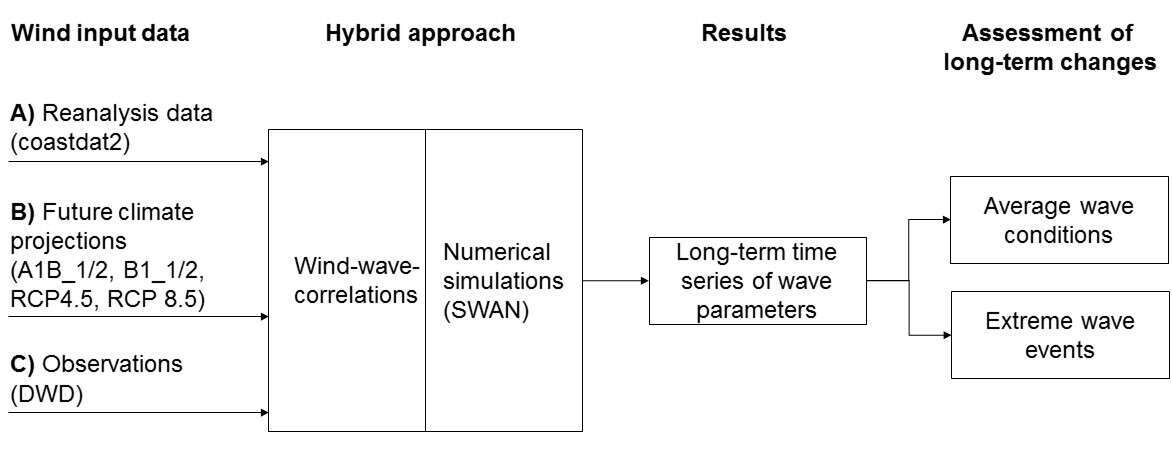
Long-term Changes of Waves at the German Baltic Sea Coast in the Past and the Future - Do We See a Trend?
For the development of new future coastal and flood protection strategies and methods as well as the adaptation of today’s existing protection structures, possible impacts of climate change on the long-term changes of the local wave conditions needs to be analysed and assessed.
In this study, we focus on three different research questions:
i) Are there any long-term changes of the waves derived from numerical model data?
ii) Are there any long-term changes of the waves derived from measurements?
iii) How well can the regional climate model reproduce the wave climate for the past?
To answer those questions, different wind data for the past and the future from regional climate models and observations (cp. Fig.) are used for the calculation of long-term time series (1948-2100) of hourly wave parameters at selected locations along the German Baltic Sea Coast.

For the calculation of significant wave heights, mean wave periods and directions, a hybrid approach is used that combines statistical (wind-wave correlations) and numerical methods (numerical simulations with the wave model SWAN).
The long-term changes of the average wave conditions in the past and the future are analysed and assed exemplarily for the frequency of occurrence of significant wave heights and mean wave directions over time periods of 30 years. Moreover the statistical significance of the changes of the frequency is assessed on the basis of statistical hypothesis tests.
The changes of extreme wave conditions in the past and the future are analysed on the basis of extreme value statistics and over time periods of 40 years.
From previous analysis of the long-term changes of the wave climate on the basis of the hybrid approach and the regional climate model Cosmo-CLM we found increases of the average significant wave heights up to +8% and more waves coming from westerly directions.
In contrast, we found no overall trend regarding the changes of the extreme wave heights. Extreme wave heights with a return period of 200 years can increase/decrease up to 14% depending on e.g. the future climate change scenario and realisation.

Powered by Eventact EMS